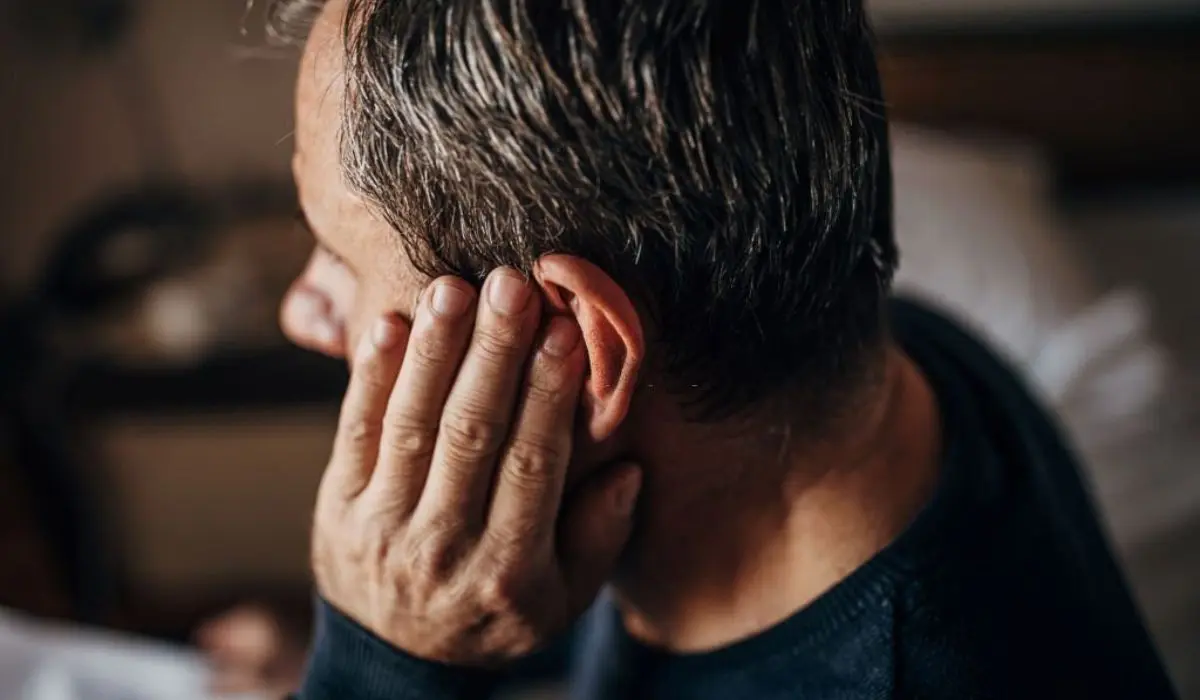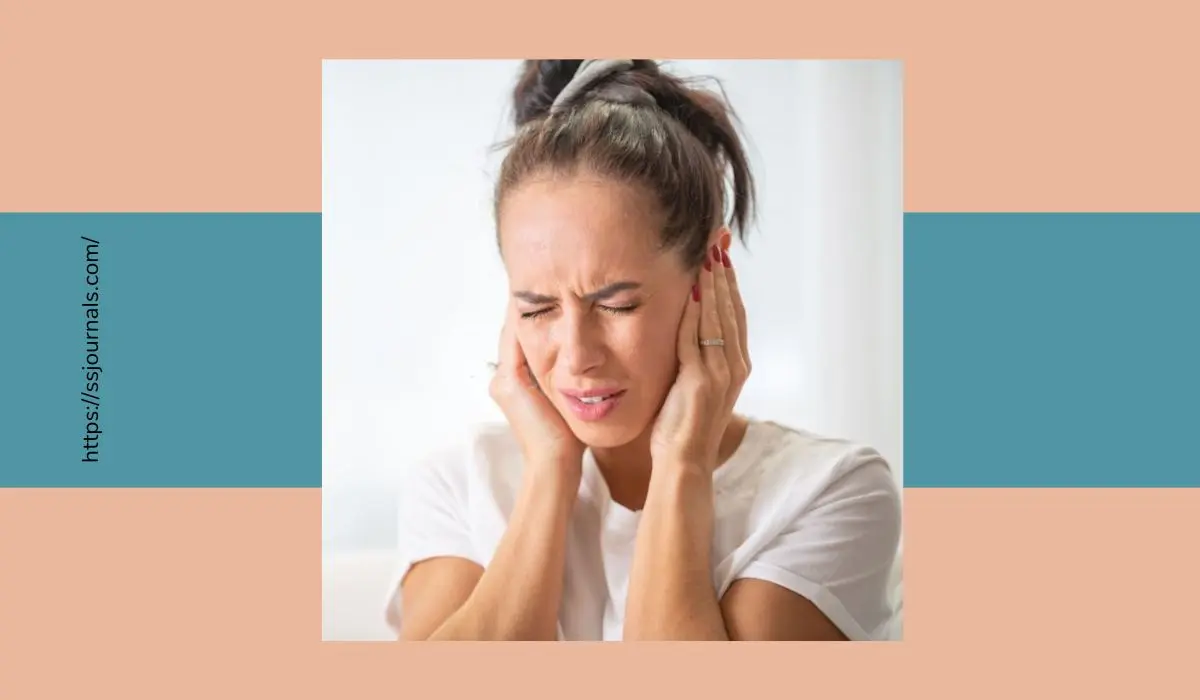Headaches affecting the area behind and around the ear can arise from various causes. Determining the source of these unpleasant headaches empowers sufferers to find relief through proper treatment.
This article explores the anatomy involved, common culprits like TMJ and neck issues, and serious causes like infections and vascular disorders. Red flags requiring medical care are also covered.
Defining Headache Behind The Ear
Headaches behind, inside, or around the ear represent a distinct subset of head pain issues. Also termed retroauricular headaches, the location differentiates them from general headaches like migraines. Localizing the pain is key to deducing the origin.

These headaches may feel like throbbing, stabbing, or pressure behind or deep inside the ear. Pain can radiate to the ear from trigeminal nerves or referral from the neck. Ear-area headaches range from benign to indicating serious medical disorders.
Importance Of Understanding The Causes
Identifying what’s causing troubling ear-associated headaches is crucial for proper treatment. With many possibilities, from TMJ to tumors, thorough diagnosis should precede treatment. Understanding common causes, and red flags allows sufferers to advocate for their health.
Common Causes Of Headache Behind The Ear
➜ Muscular Tension and Neck Strain
Overuse and tightness in upper neck muscles often radiate into headaches behind the ears. Trigger points in the sternocleidomastoid and suboccipital muscles cause localized pain. Poor posture aggravates muscular tension.
➜ Occipital Neuralgia
Irritation or injury to the occipital nerves at the base of the skull is a common cause of head pain behind the ears. Compression of the nerves can arise from tight muscles, osteoarthritis, or anatomical anomalies.
➜ Temporomandibular Joint (TMJ) Disorder
The temporomandibular joints hinge the jaw and are located just in front of the ears. TMJ dysfunction from bruxism, injury, or malocclusion can refer to pain behind the ears. Chewing and yawning worsen the ache.
➜ Cervicogenic Headaches
Issues like degenerative discs or vertebrae in the upper cervical spine frequently cause head pain. Neck problems lead to pain felt behind the ears due to nerve pathways. Head movement tends to aggravate cervicogenic headaches.
Headaches affecting the area behind or around the ear have various potential causes that require thorough evaluation.
Medical Conditions And Systemic Causes
➜ Sinus Infections and Headaches
Sinus congestion and inflammation from sinusitis or rhinitis commonly precipitate deep facial pain including behind the ears. Post-nasal drip and pressure exacerbate the headaches.
➜ Migraines and Ear-Related Pain
Ear pain or sensation of fullness in the ears can sometimes occur before migraines. Altered perception of sounds may also accompany migraine headaches due to their neurological nature.
➜ Neural Conditions and Nerve Compression
Impingement of cranial nerves in the head and neck by structures like tumors or blood vessels can trigger secondary headaches behind the ears. Neuralgias of the glossopharyngeal or vagus nerves may also contribute.
➜ Dental Issues and Ear-Associated Headaches
Dental problems like impacted wisdom teeth, infections, and temporomandibular joint disorders cause head and facial pain, including behind the ears. Jaw pain often extends into the ear.
Inflammatory And Infectious Causes
➜ Otitis Media and Ear Infections
Otitis media is an infection of the middle ear structures that produce severe throbbing earaches. The pressure and swelling can radiate into an adjacent headache. Drainage provides relief.
➜ Mastoiditis
Infection and inflammation of the bony mastoid area behind the ear require prompt antibiotic treatment. Mastoiditis causes deep radiating ear and head pain with redness and heat behind the ear.
Treatment And Management
▪️ Pain Relief Strategies
OTC or prescription analgesics provide temporary headache relief while determining the cause. Cold compresses, massages, and stretches may also ease the pain. Trigger point injections can disable pain knots.
▪️ Medications for Various Causes
Medications prescribed depend on the diagnosis. Anti-inflammatories, muscle relaxants, indomethacin, antidepressants, and calcitonin help certain headaches. Antibiotics treat infectious sources.
▪️ Physical Therapy and Exercises
Gentle neck stretches, posture training, TMJ, and trigger point exercises performed under PT guidance are effective for tension and cervical headaches. Good ergonomics prevent a recurrence.
▪️ Lifestyle Modifications
Stress reduction techniques, dietary changes to avoid triggers, limiting alcohol, smoking cessation, and optimizing sleep all help minimize headaches without medication. Biofeedback allows control of muscle tension.
Recurring or worsening headaches behind the ear should prompt medical consultation to identify the origin and appropriate treatment.
Prevention And Self-care
▪️ Tips for Preventing Headaches Behind the Ear
▪️ Stress Management Techniques
Yoga, deep breathing, mindfulness meditation, and walks outdoors help counter headache triggers like anxiety and tension. Maintain balance between work, recreation and rest.
▪️ Maintaining Good Posture and Ergonomics
Setting up workstations properly to avoid neck strain and arranging pillows to keep the head aligned on the spine while sleeping helps prevent headaches caused by poor ergonomics. Regular stretch breaks relieve postural stress.
When To Seek Medical Help?
Seek prompt medical care for:
For recurring headaches behind the ear, consult primary care doctors or neurologists. ENT doctors evaluate ear disorders. Physical therapists address cervicogenic causes. Most cases can be successfully managed by determining the source.
Conclusion
Headaches affecting the head region near the ear stem from various sources. Muscular dysfunction, neuralgias, TMJ disorders, cervical arthritis, infections, and vascular issues account for the majority. Less common causes range from neoplasms to aneurysms.
FAQs
Muscular tension and neck issues like cervical spondylosis are the most common causes of headache behind or around the ear. Poor posture often contributes.
Yes, sinusitis is a well-known cause of deep facial pain including headaches around the ear region. Drainage and facial pressure generate the ache.
Seek medical care if the headaches are severe or persistent, accompanied by neurological symptoms, or present after any trauma. Evaluation is needed to determine the cause and appropriate treatment.
Yes, tension headaches related to anxiety, depression, and high stress levels can certainly cause headaches affecting the area around the ears. Stress management helps.
TMJ dysfunction can refer pain to the ear region due to the temporomandibular joint’s proximity to the ears. Jaw issues like bruxism are a common ear headache culprit.

